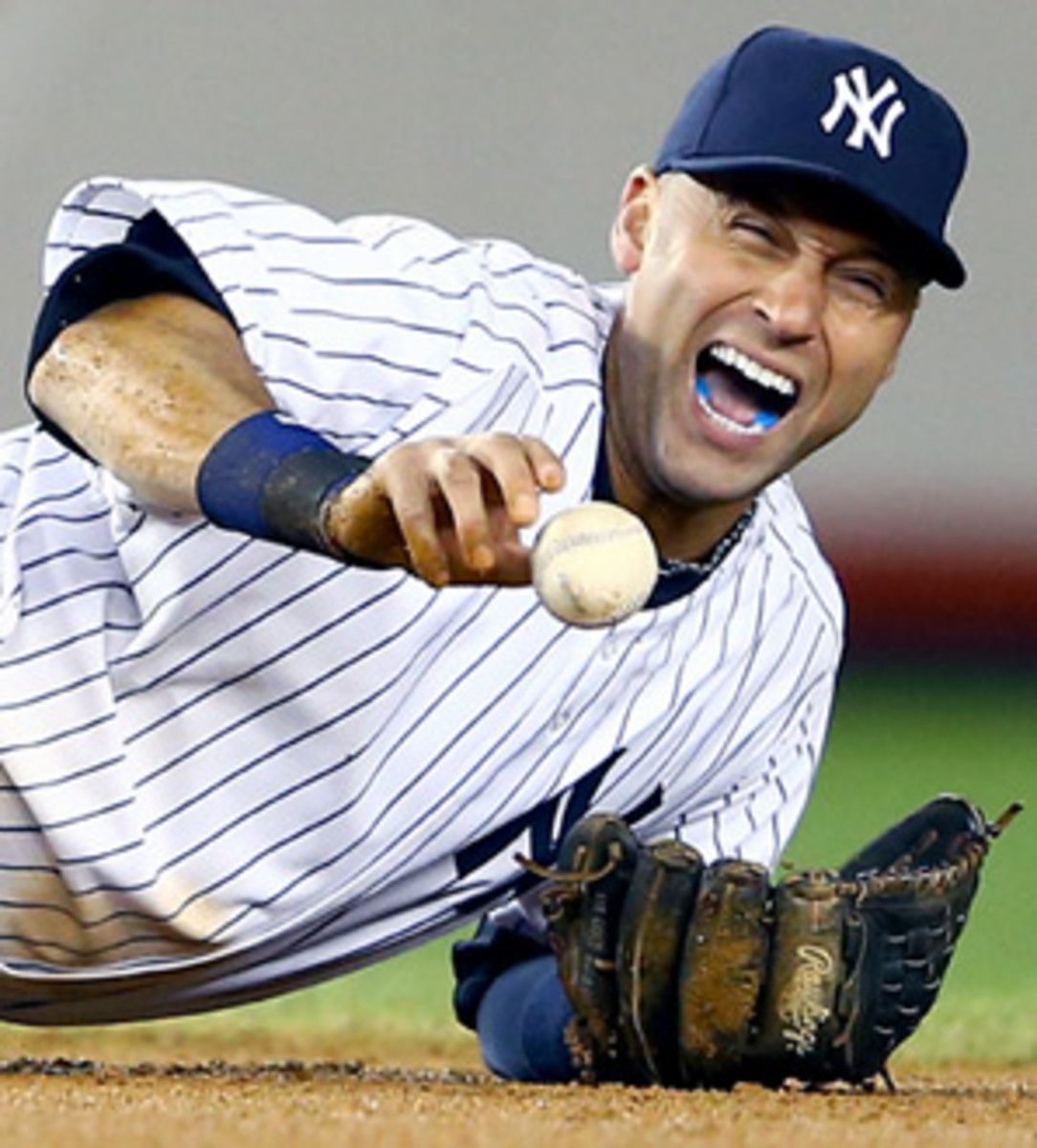Jeter should have no difficulty returning from fractured left ankle


Derek Jeter has been carried off the field before, but usually on the shoulders of his victorious teammates. This time it was helped by his manager, Joe Girardi, and head athletic trainer Steve Donahue. Jeter was quickly found to have a fractured ankle and is done for the postseason.
Jeter was making a play to his left and as he leaned down to glove the ball, his left ankle appeared to roll. That ankle and foot have had issues for several weeks, but Girardi denied that the injuries were in any way related. Most ankle fractures such as this are single-event traumas and this matches up. As the play continued, Jeter's body reacted sharply to the pain of the injury and he appeared to then roll over the right ankle. On the first replay, my focus was actually on the right side. Jeter was unable to stand up after making the play, tossing the ball to Robinson Cano.
Donahue was out quickly after Jeter could not stand. He was checked quickly on the field and removed to the clubhouse, where an x-ray machine is just steps away down the corridor. Girardi's worst fears were confirmed by the X-ray. Jeter will be out for the remainder of the post-season, replaced on the roster by Eduardo Nunez.
This type of fracture would normally take between six-10 weeks to recover from for a baseball player. It is longer, often as much as 12 weeks, for a middle infielder due to their need for lateral motion and quick, forceful moves on throws and turning double plays at the bag.
Indications are that Jeter's fracture is to the tibia, the larger bone of the lower leg. That bone -- the "shin" -- is thick and stable, but bears almost all the weight of the body. The question now is whether there is any associated damage inside the ankle. If there is any ligament or tendon damage, that can take significantly longer to heal and is much less predictable than bone's healing. Buster Posey had soft tissue damage in addition to a fracture and required over six months to return, though he has been very good since coming back. There is no indication that Jeter will need surgery, though the Yankees would not rule that out until he is examined by their physicians. If surgery is necessary, the timeline for recovery is no different.
Jeter should have no difficulty returning from this injury once the bone has healed (and assuming no soft tissue damage.) Bones heal predictably and completely. It is easily checked by X-ray or fluoroscope and seldom requires much beyond time and reduced weight bearing. Expect Jeter to be near normal by the time the Yankees open the gates to Steinbrenner Field and to be playing normally by March.
Some questions many are asking are whether there was a "pre-fracture" or if the ankle and foot injuries contributed to the fracture. The Yankees denied this was the case, but it is impossible to tell how, if any, the biomechanics were changed. It is also impossible to tell if Jeter was wearing any sort of tape or brace, though it is reasonable to assume so. By the point in the game when Jeter was injured, tape would have lost much of its strength, though athletes are often re-taped during breaks in the action. A brace might change the kinematics of how the force was distributed on that fateful step. Jeter was wearing high-top cleats, but no shot I saw gave any indication that he was braced. While at bat, he was wearing an advanced shin guard that also wrapped over his foot, but did not wear that in the field.
I did notice that at the point where Jeter was injured, the field appeared to be wet. It is common for grounds crews to wet the field at certain points during the game. Jeter appeared to have mud on his cleats and on his body after laying on the ground. It is impossible to know if this contributed in any way to the injury, but it does bear noting.
Jeter's age should not have any effect on his rehabilitation. Jeter may be old for a shortstop, but he is unlikely to be suffering from any sort of osteoporosis or similar weakening conditions. It is also, again, not a difficult rehab that requires strenuous work. As with most broken bones, Jeter will simply have to wait for it to heal while trying to remain in some physical condition.
Finally, people are asking what injuries are similar to this, but there are not many to go on. I mentioned Posey, but that was a much more significant trauma and involved more structures. Ivan DeJesus Jr. suffered an injury with similar trauma while in the minors and came back in four months. There are several other fractures in the Injury Database that occurred when pitchers were struck by comebackers, such as Roy Halladay and Alan Embree. (Andy Pettitte fractured his fibula, the other bone of the lower leg.) Tsuyoshi Nishioka fractured his fibula on a play involving Nick Swisher at second base, a position comparable, but not the same injury or mechanism.
The injury is much more common in impact sports such as football (Marc Mariani, return man for the Titans injured his during a runback), soccer (where slide tackles make this an all too common injury), and even gymnastics, where U.S. star McKayla Maroney recently fractured her leg on a dismount. As with all of those athletes, Jeter should be able to return. Whether the Yankees will be able to come back as cleanly remains to be seen, starting with Game 2 of the ALCS.
